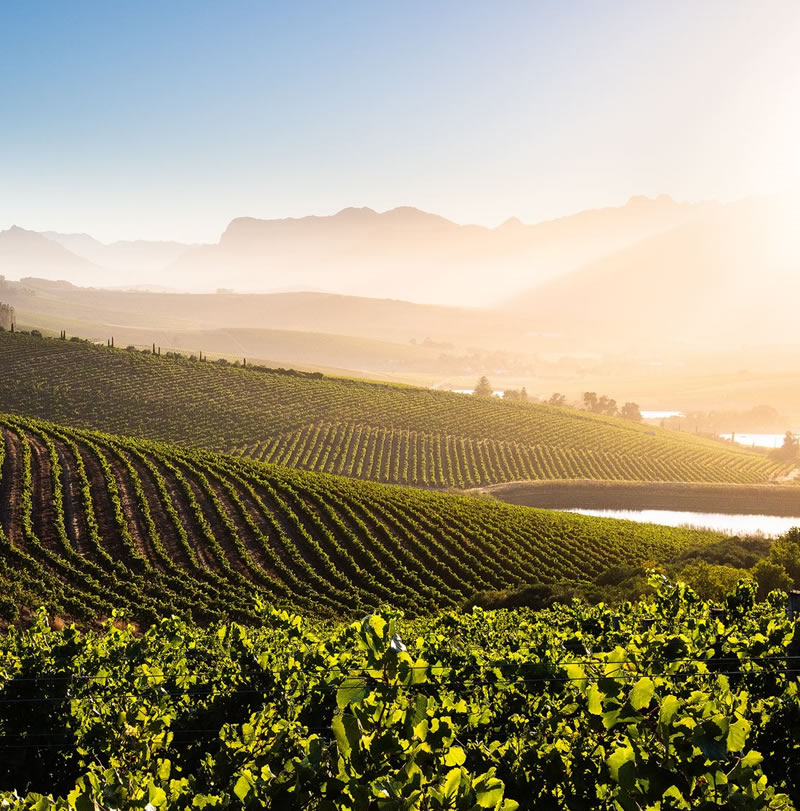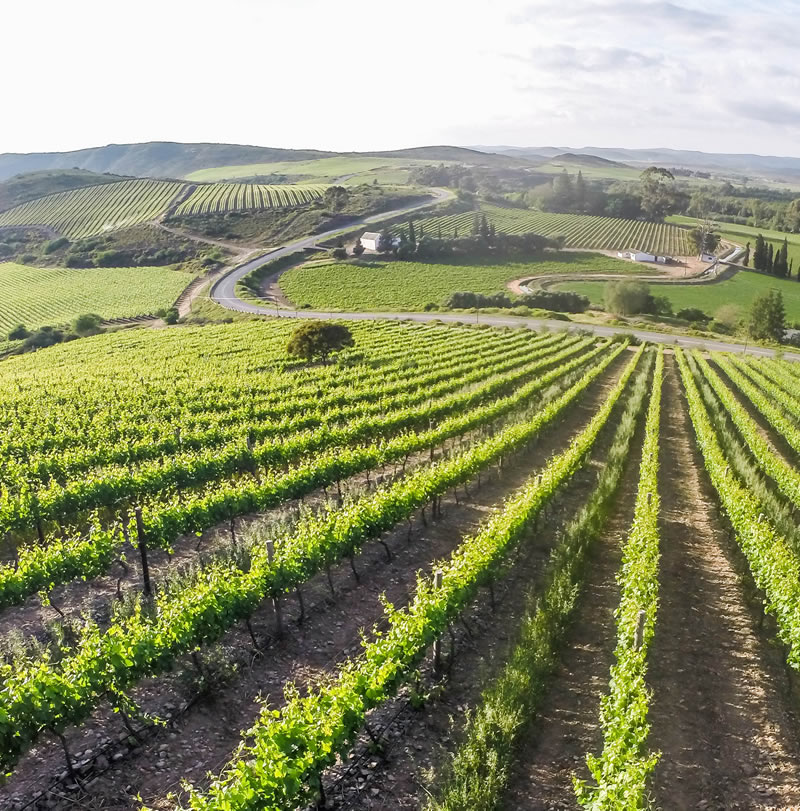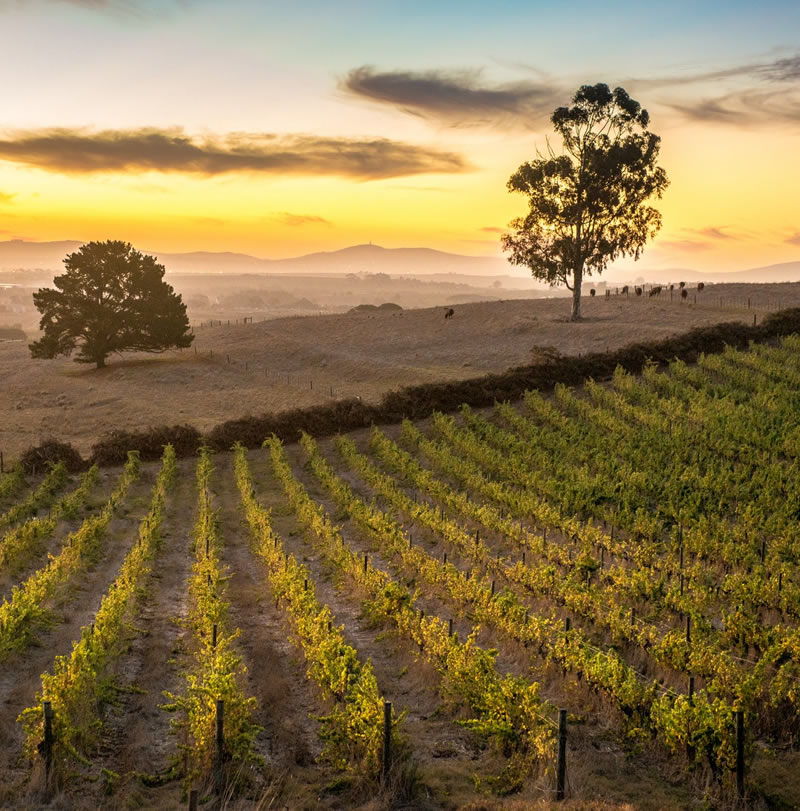Chardonnay has been a relative late-comer to the South African vineyard landscape. The planting of this great white grape of Burgundy only really began to take root in the 1980s after a period of trial, error and experimentation with the finding of plant material best-suited to South African conditions. By 1990 Chardonnay only comprised 1.5% of all of South Africa's vineyards, with De Wetshof, Backsberg and Simonsig generally regarded as this varieties pioneers in the country. Today some 6 685ha (13%) of the Cape Winelands is planted to Chardonnay, with the variety showing its ability to adapt to an exciting diversity of terroir by being present throughout the country's wine regions.
The most planted regions are Robertson, Stellenbosch and Paarl, and together with these the Cape has a spectacular regional diversity in its Chardonnay offering. From the mountainous valley of Franschhoek, the misty West Coast to the cool-climate areas of Elgin and Walker Bay and the wind-swept South Coast, Chardonnay-producers are united in their determination and ability to make premier Chardonnay from grapes grown in diverse terroirs.
The increase in Chardonnay plantings has been complemented by a rigorous commitment to quality as winemakers in the various geographical pockets seek to imprint their specific terroir attributes on their wines. This has resulted in international and local wine critics paying special tribute to the quality of Cape Chardonnay, more than one of these stating that when it comes to Chardonnay, South Africa is making some of the best wines from this grape variety outside of Burgundy.
The most planted regions of Chardonnay in South Africa are Robertson, Stellenbosch and Paarl



In the initial stages of Chardonnay production - through the 1980s and early 1990s - many of the country's wines mirrored the New Wine World's modish obsession with wood-maturation, resulting in wines that were big, broad and oaked. Today the situation is vastly different as four decades of experience with the variety has resulted in Chardonnay-producers from various regions unilaterally agreeing that the focus must be on expressing terroir and vineyard in the wine.
As a result of the Cape's riveting and dramatic array of diversity in soils, climates and topography,
South Africa showcases an astounding Chardonnay offering capturing the imagination of the local and international wine public. Styles vary between warm and complete, fresh and cool, to lean and austere. Use of wood ranges from lengthy maturation in new oak, combinations between new and old barrels, short spells in used wood to totally unwooded Chardonnays.
Chardonnay also lies at the heart of the country's Cap Classique sparkling wine industry. The sector of bottle-fermented sparkling wines, which was pioneered in 1971, is one of South Africa's most popular and prized categories. Chardonnay is by far the most-used variety for Cap Classique base-wines, and the cultivar plays a significant role in ensuring the continued high status of this sector.
Cape Chardonnays regularly make their way onto the world's leading wine competition podiums and South African Chardonnay is a leading light in the country's export offering with established markets in Europe, America and the Far East.